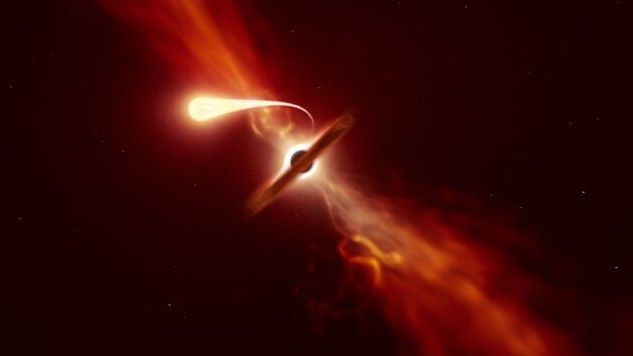Livescience
2M
124

Image Credit: Livescience
Our galaxy's monster black hole is spitting out mysterious flares, James Webb telescope reveals
- Astronomers using the James Webb Space Telescope observed our galaxy's supermassive black hole, Sagittarius A*, and found constant flares erupting from the gas swirling around it.
- Sagittarius A* is 26,000 light-years away, 4 million times the mass of the sun, and 14.6 million miles wide.
- The black hole's unique and active nature was observed over 2023-2024, with constant changes in activity noted during multiple observations.
- Despite being a small fraction of the Milky Way's mass, Sagittarius A* influences the galaxy's evolution by sucking in and ejecting matter.
- JWST's observations revealed 5-6 big flares per day from the black hole, showing random and unpredictable activity.
- The flares may result from compression in the accretion disk and clashes of magnetic-field lines within the disk.
- Flares were observed dimming faster at shorter wavelengths, indicating energy loss by particles in the flares swirling around magnetic-field lines.
- Future research aims to observe the black hole for longer periods to reduce noise and explore other features in its surroundings.
- Understanding these flares and their sources can provide insights into the dynamics of supermassive black holes and their impact on galaxies.
- Observing Sagittarius A* with JWST presents an opportunity to unlock more mysteries surrounding the behavior and nature of these cosmic monsters.
Read Full Article
7 Likes
For uninterrupted reading, download the app